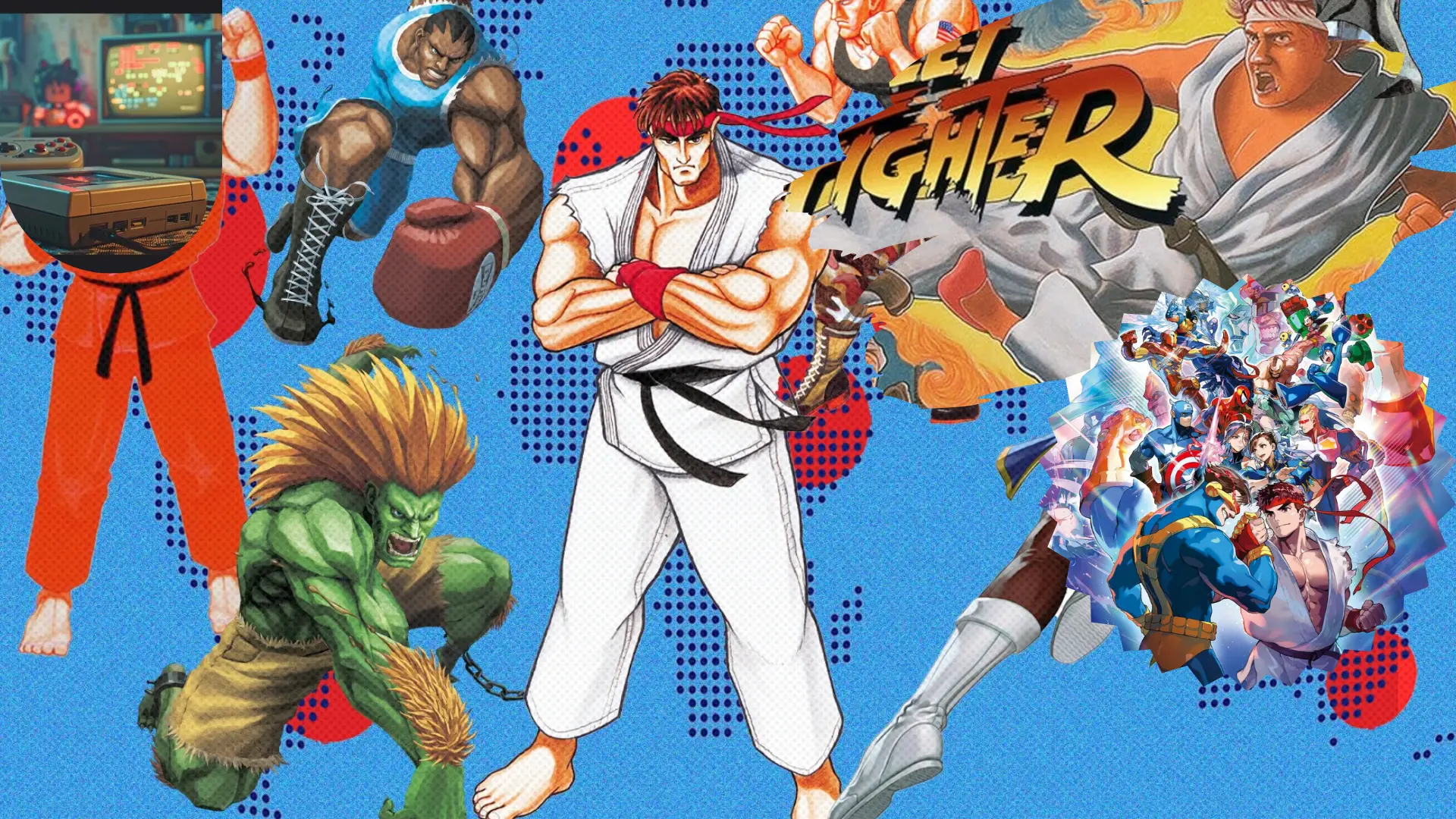Introduction
In terms of the foundations of fighting games curriculum, no title looms larger than Street Fighter II. Released commercially by Capcom in 1991, it was not so much a sequel as a follow-up to an underwhelming predecessor; rather, an unequivocally revolutionary title that transformed the very face of arcade gaming and created a blueprint that practically all modern fighting games still follow. Even today, more than thirty years later, Street Fighter II continues to tower above all in the ranks of fighting game communities (FGC) as both a nostalgic masterpiece and solid competitive staple. This article further explores why such longevity persists, examining its enduring influence as a cultural footprint, design excellence, and contemporary relevance in the context of modern competitive gaming.
The Birth of a Genre
While the original Street Fighter (1987) birthed the idea of one-on-one fighting with special moves, Street Fighter II was the definitive combat game of its time. The game provided a more accessible control system, a diverse and characterful roster with unique abilities, and a unique balance system that catered to both strategy and reflexes. The easy-to-learn but hard-to-master mechanics were what set this game apart. These six buttons (three for punches and three for kicks, with varying strengths and speeds) unleashed a torrent of potential for combos, defense, zoning, and mind games. It was this simple yet sophisticated design that attracted a multitude of players, creating competitive rivalries.
Character Diversity and Personality
Eight playable characters with diverse fighting styles, backgrounds, and special moves were introduced in Street Fighter II; Ryu and Ken were modeled after disciplined martial artists, while Chun-Li was among the earliest feminist leads in the fighting genre. Blanka, Guile, Dhalsim, E. Honda, and Zangief each added uniqueness in character and playability to cater to very different player tastes.
The international cast comprises cultural variety, giving the game worldwide appeal. Players based their choices on more than just strength; rather, they resonated with the character on a personal level and felt they could play best with the character based on their particular fighting style. This diversity is what helped establish the game as a universal experience, lending to its longevity across different locales and communities.
The Arcade Era and Social Competition
The arcades represented the site for the utmost competitive gaming in the early 1990s, and Street Fighter II was its regal jewel. The head-to-head format seemed to generate a social aspect where local rivalries and communities would take an active role. Players would crowd the machines, each taking a turn to challenge the current champion. To yield, that is, to lose, would mean giving up your might-as-well-consider-it-an-invincible spot, and that was what lent every match intensity.
Such scenarios contributed to building some of the earliest competitive setups, especially in Japan, the United States, and South Korea. The presence of the local heroes, whose skills became the stuff of legend, gained prominence, and soon regional tournaments were to follow.
Competitive Balance and Skill Expression
What is all the more revered about Street Fighter II is its competitive balance. While not perfect today, the mechanics were sufficiently fine-tuned to allow for high-level play without one strategy being utterly dominant. Yomi-mind games emerged as an important mode of play in which you try to read the opponent’s intentions and counter them.
Skill-wise, the measurement was clear. Players excelling at spacing, timing, and combo execution were typically awarded victory in the end. Unlike many of its predecessors, where mindless button mashing might sometimes give you a fighting chance, intentionality and precision were the order of the day that gave Street Fighter II its real payoffs, thus maintaining the respect of the community and furthering its development.
Evolution Through Iterations
Capcom continued working on the game. Street Fighter II has had many revisions over the years:
- Street Fighter II: Champion Edition added mirror matches and playable bosses.
- Hyper Fighting speed things up and changed the balance.
- Super Street Fighter II presented a slew of new characters with improved audio and graphics.
- Super Street Fighter II Turbo introduced Super Combos and a faster-paced game, which has remained the competitive standard to date.
In all of these updates, the basic gameplay was kept intact, but balance tweaks were introduced to let the community grow and evolve with the game. Super Turbo, more than any of the others, was institutionalized for competitive tournaments and is still widely played today in events like EVO.
The EVO Moment and Community Legacy
There is no greater moment than this in defining the championship pedigree of Street Fighter: EVO Moment #37. Even though it happened in 2004 during a Street Fighter III: Third Strike match between Daigo Umehara and Justin Wong, it harkens back straight to the legacy of Street Fighter II. It captured all that the series stood for: execution, timing, misdirection, and dramatics.
Very often, the fighting game community refers to Street Fighter II as its grand ancestor. Many of the top players started playing this title and in all emerging games; Street Fighter II has left an indelible mark through its gameplay mechanics, through tournament formats, and through community cultures.
Influence on Modern Fighting Games
Street Fighter II has to admit a huge debt itself toward the new-age fighting games. It invented or popularized a lot of features like combos, special moves, characters (shoto, grappler, zoner), and meter management. Based on the same feature set, games like Tekken, Mortal Kombat, Guilty Gear, King of Fighters, and Marvel vs. Capcom were developed. Even 3D fighters keep the basic design principles that have formative influences from Capcom’s legendary title.
Moreover, Street Fighter II even defined marketing and education techniques in fighting games, as well as their balance patching. It wasn’t just a game, but a design manual.
Continued Relevance Through Ports and Remasters
One major reason Street Fighter II is still alive is accessibility. The game has been ported to almost every console, from the Super Nintendo Entertainment System (SNES) to the Nintendo Switch. It has been re-released in collections, HD remasters, and digital arcade cabinets.
In this manner, new audiences are being educated about the roots of the FGC. The constant refreshment helps to keep the title fresh and visible for the younger audience, who, despite their age, still want to understand where the FGC came from.
Nostalgia and Cultural Impact
Nostalgia is one of the basic or main things that keep Street Fighter II relevant. For most players, it is their first exposure to actual competition. All the music, the stages, the voice lines, and the character animations are now part of the shared memory of an entire generation.
The cultural penetration is outside the formal games. Street Fighter II ran through anime; it carried its influence to feature films, comic books, and merchandise. Its characters are now popular all over the globe, with phrases like” Hadouken “already in the lexicon of pop culture.
Induction into the World Video Game Hall of Fame in 2022 further secures Street Fighter II’s place in history as an icon of timelessness.
Grassroots Tournaments and the Retro Scene
It’s Street Fighter II that still thrives at grassroots tournaments, while the latest additions to the series, like Street Fighter V and Street Fighter 6, are huge in mainstream esports. There are always side brackets or main stage events for Super Turbo at events like Combo Breaker, CEO, and EVO.
The retro fighting game community is bright and passionate. There are vibrant communities on Discord, Fightcade (an online emulator platform), and YouTube where many have formed valiant competitions, sharing sweet tech, and keeping the meta alive. For many, the gaming experience is a more pure gladiatorial combat devoid of modern multi-faceted complications and DLC politics.
Educational Value and Legacy Learning
Street Fighter II has also begun to be used for educational purposes. Many content creators and competitive coaches use it to teach spacing, footsies, anti-airing, and neutral game. Given the low-tech mechanics of Street Fighter II compared to modern titles, it helps players to sharpen core skills without support from gimmicks or an assortment of overcomplicated systems.
New players aspiring to make it big in the modern fighting game often come back to Street Fighter II to learn their basics. It is perceived as a sort of dojo, a training ground to hone reflexes, awareness, and decision-making capabilities.
Conclusion
Street Fighter II has become much more than just a game; with it, the fighting game genre was conceived, as well as the community that revolves around it and compiles an entire understanding of how competitive play worked. It is simple, well-designed, diverse with characters, and has its particular cultural significance to always be relevant decades after the opening of the gate.
Street Fighter II is a monument to timeless design amid changing trends and technologies. Whether you are a nostalgic veteran or a new entrant trying to grasp the roots of the FGC, Street Fighter II is among the most important chapters in the history of gaming; in many ways, it is still ruling.

